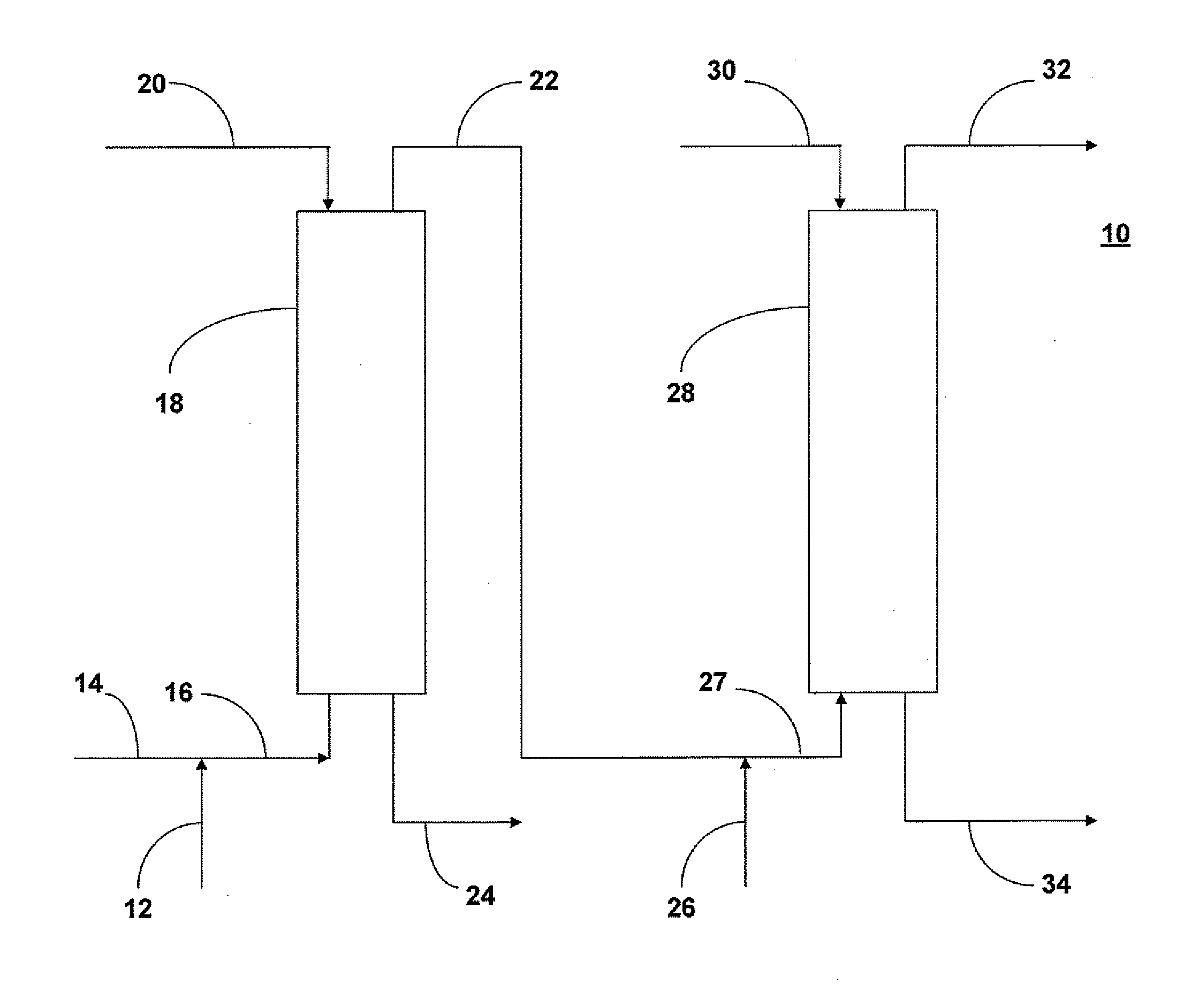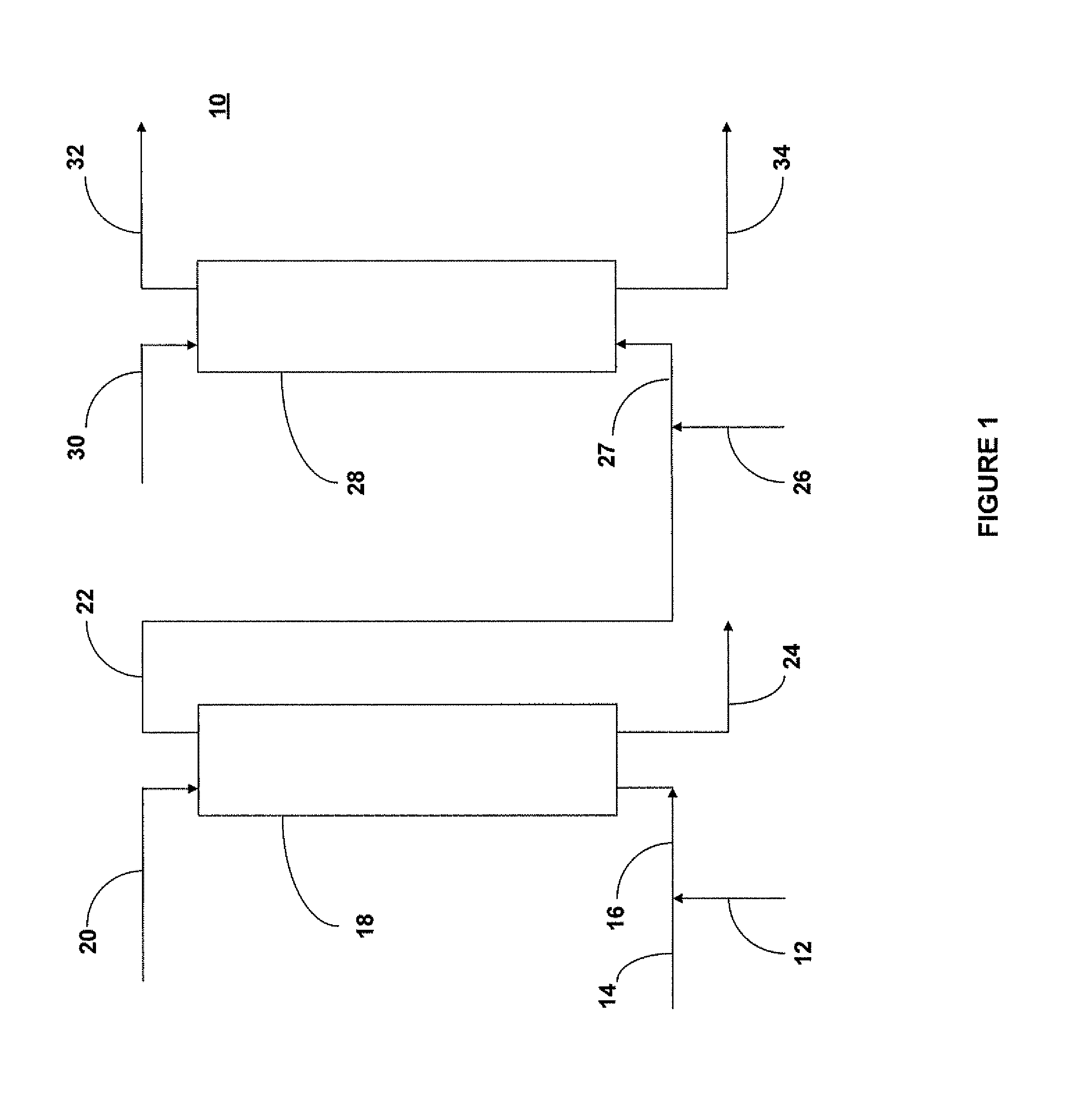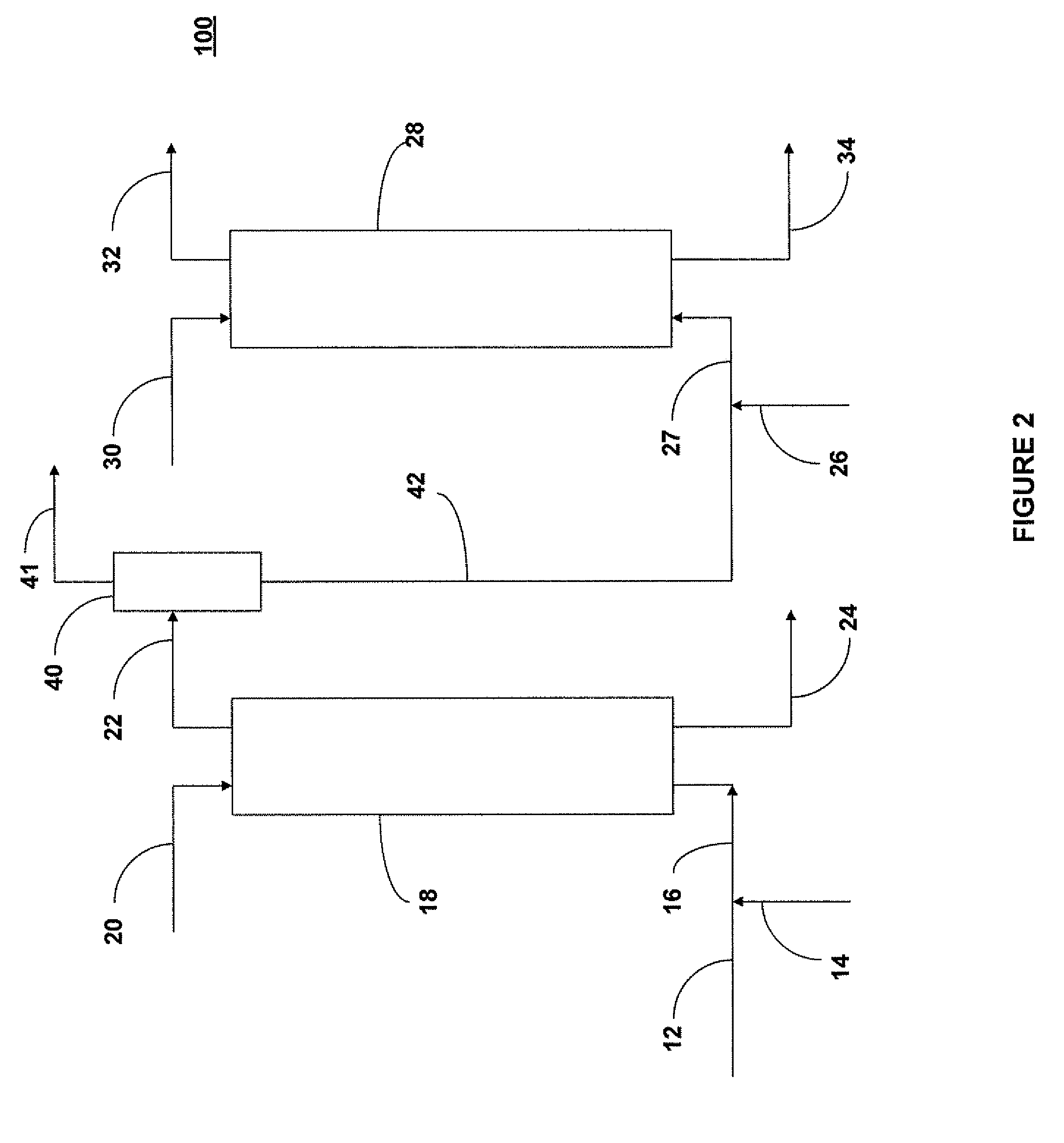Process for the sequential hydroconversion and hydrodesulfurization of whole crude oil
a technology of hydrodesulfurization and crude oil, which is applied in the direction of metal/metal-oxide/metal-hydroxide catalysts, physical/chemical process catalysts, metal/metal-oxide/metal-hydroxide catalysts, etc., can solve the problems of catalyst replacement cost and time-consuming, asphaltene concentration is reduced, and sulfur content is reduced
- Summary
- Abstract
- Description
- Claims
- Application Information
AI Technical Summary
Benefits of technology
Problems solved by technology
Method used
Image
Examples
example
[0046]An Arab heavy crude feedstock having properties as shown in Table I below was processed in accordance with an embodiment of the present invention.
[0047]
TABLE 1Properties of Heavy Oil FeedstockCrude OriginUnitsArabian Heavy ExportRefractive index1.5041Density at 15° C.g / ml0.8904API Gravity°27CCRwt %8.2Vanadiumwt ppm56.4Nickelwt ppm16.4Sulfurwt %2.8297NaCl contentwt ppmCwt %84.9Hwt %11.89Owt %0.43Nwt %0.22Swt %2.71
[0048]The system was maintained at a total hydrogen pressure of about 100 bar and the hydrogen gas to hydrocarbon feedstock ratio was maintained at a ration of about 800 liters of hydrogen per liter of Arab heavy crude feedstock. The catalyst system was maintained at a temperature of between about 400° C. and 420° C. The heavy crude oil was supplied with hydrogen gas to a first reactor charged with a hydroconversion catalyst, and the effluent from the first reactor was then supplied, along with hydrogen gas, to a second reactor charged with a hydrodesulfurization catal...
PUM
| Property | Measurement | Unit |
|---|---|---|
| temperature | aaaaa | aaaaa |
| temperature | aaaaa | aaaaa |
| diameter | aaaaa | aaaaa |
Abstract
Description
Claims
Application Information
 Login to View More
Login to View More - R&D Engineer
- R&D Manager
- IP Professional
- Industry Leading Data Capabilities
- Powerful AI technology
- Patent DNA Extraction
Browse by: Latest US Patents, China's latest patents, Technical Efficacy Thesaurus, Application Domain, Technology Topic, Popular Technical Reports.
© 2024 PatSnap. All rights reserved.Legal|Privacy policy|Modern Slavery Act Transparency Statement|Sitemap|About US| Contact US: help@patsnap.com










